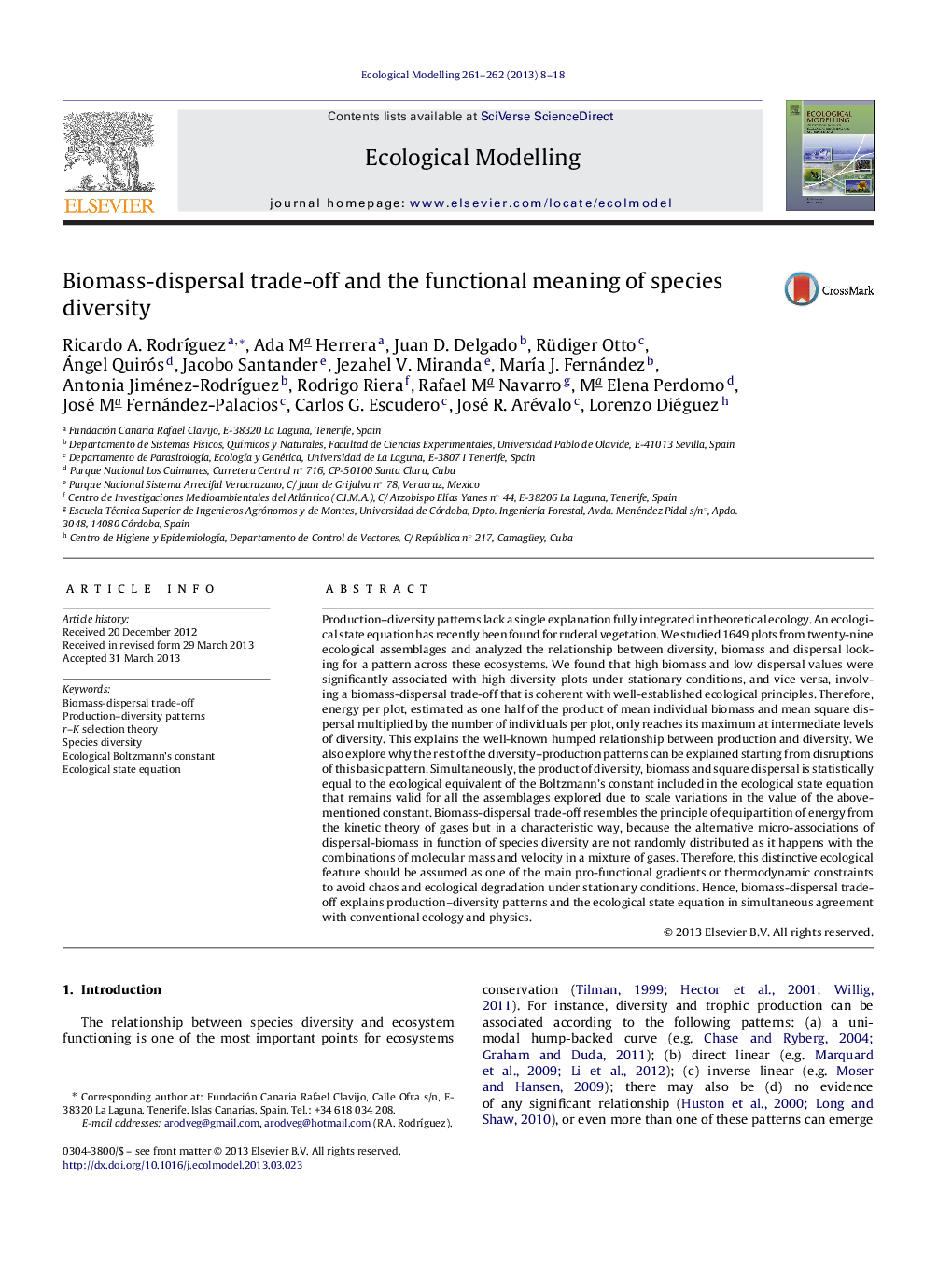| Article ID | Journal | Published Year | Pages | File Type |
|---|---|---|---|---|
| 6297141 | Ecological Modelling | 2013 | 11 Pages |
Abstract
Production-diversity patterns lack a single explanation fully integrated in theoretical ecology. An ecological state equation has recently been found for ruderal vegetation. We studied 1649 plots from twenty-nine ecological assemblages and analyzed the relationship between diversity, biomass and dispersal looking for a pattern across these ecosystems. We found that high biomass and low dispersal values were significantly associated with high diversity plots under stationary conditions, and vice versa, involving a biomass-dispersal trade-off that is coherent with well-established ecological principles. Therefore, energy per plot, estimated as one half of the product of mean individual biomass and mean square dispersal multiplied by the number of individuals per plot, only reaches its maximum at intermediate levels of diversity. This explains the well-known humped relationship between production and diversity. We also explore why the rest of the diversity-production patterns can be explained starting from disruptions of this basic pattern. Simultaneously, the product of diversity, biomass and square dispersal is statistically equal to the ecological equivalent of the Boltzmann's constant included in the ecological state equation that remains valid for all the assemblages explored due to scale variations in the value of the above-mentioned constant. Biomass-dispersal trade-off resembles the principle of equipartition of energy from the kinetic theory of gases but in a characteristic way, because the alternative micro-associations of dispersal-biomass in function of species diversity are not randomly distributed as it happens with the combinations of molecular mass and velocity in a mixture of gases. Therefore, this distinctive ecological feature should be assumed as one of the main pro-functional gradients or thermodynamic constraints to avoid chaos and ecological degradation under stationary conditions. Hence, biomass-dispersal trade-off explains production-diversity patterns and the ecological state equation in simultaneous agreement with conventional ecology and physics.
Related Topics
Life Sciences
Agricultural and Biological Sciences
Ecology, Evolution, Behavior and Systematics
Authors
Ricardo A. RodrÃguez, Ada Mª Herrera, Juan D. Delgado, Rüdiger Otto, Ángel Quirós, Jacobo Santander, Jezahel V. Miranda, MarÃa J. Fernández, Antonia Jiménez-RodrÃguez, Rodrigo Riera, Rafael Mª Navarro, Mª Elena Perdomo,
